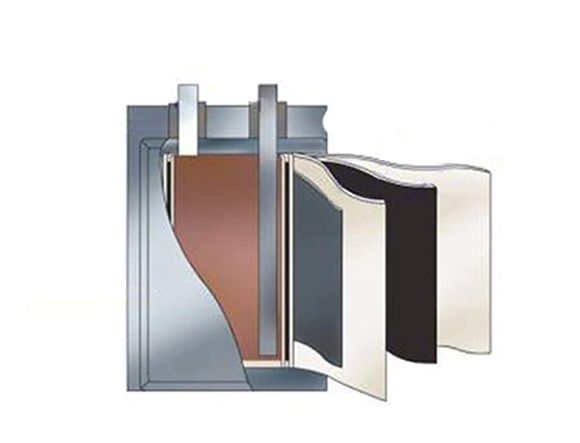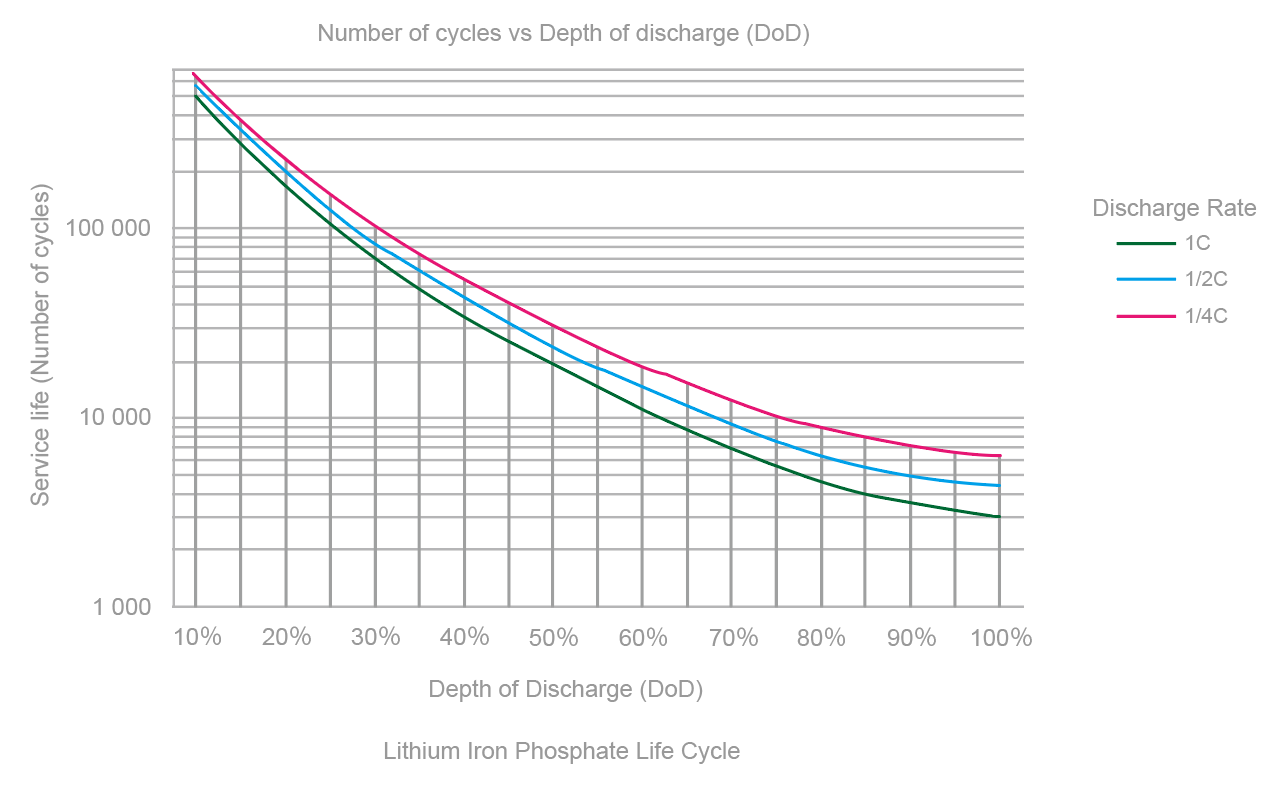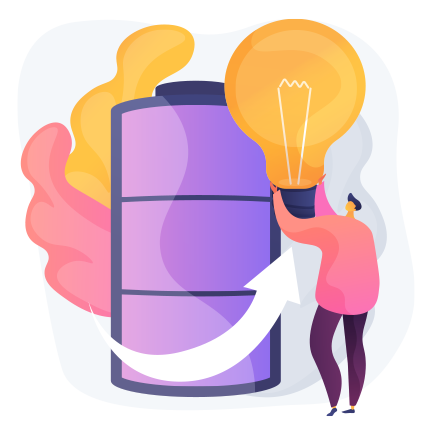Lithium Iron Phosphate - LFP - LiFePO4-cell
Lithium Ferro Phosphate technology (also known as LFP or LiFePO4), which appeared in 1996, is replacing other battery technologies because of its technical advantages and very high level of safety.
The long service life of the LFP and the possibility of deep cycling make it possible to use LiFePO4 in energy storage applications such as Off-Grid systems, self-consumption with battery and stationary storage in general.
Due to its high power density, this technology is used in heavy-duty traction applications or medium-power traction applications such as industrial vehicles, marine traction, AGV,robotics, last mile delivery and E-mobility.
Lithium Iron Phosphate technology has limitations on the number of charge/discharge cycles of Lithium Iron Phosphate batteries. That is why this technology is mainly adopted in stationary energy storage systems such as UPS, Off-Grid and self-consumption, for applications requiring long life.
The following factors determine the actual cycle times of lithium iron phosphate batteries:
1.Quality of Lithium Cell
2.Depth of Discharge (DOD)
3.Operational environment: humidity, temperature.
4.Level of power in C-Rate (1C rate means full discharge or charge in 1 hour, 2C is the same but in half an hour)
The table below is to estimate the cycle number of our lithium iron phosphate battery based on the discharge power and DOD data of the LiFePO4 battery. The test conditions are carried out under the experimental conditions of constant temperature 25°C and constant charge and discharge power.
Life-cycle of Lithium Iron Phosphate technology (LiFePO4)
In a standard experimental environment, for a 1C cycle, we can estimate the following life cycle of LFP from the chart:
●10 000 cycles at 60% DoD
●4 500 cycles at 80% DoD
●3 000 cycles at 100% DoD
It can be seen from the experiment that after the battery has completed the number of cycles, its nominal capacity is still greater than 80% of the original capacity
There are some major advantages of Lithium Iron Phosphate:
1.Very low toxicity for environment (use of phosphate,iron and graphite)
2.Ease of recycling
3.Very secure and safe technology (No Thermal Runaway)
4.Calendar life > 10 ans
5.Constant power throughout the discharge range
6.Operational temperature range :up to 70°C
7.Very low internal resistance. Stability or even decline over the cycles
8.Cycle life : from 2000 to several thousand (see chart below)
LITHIUM IRON PHOSPHATE (LFP OR LIFEPO4)
Copyright © 2024 Joysuny | All Rights Reserved





